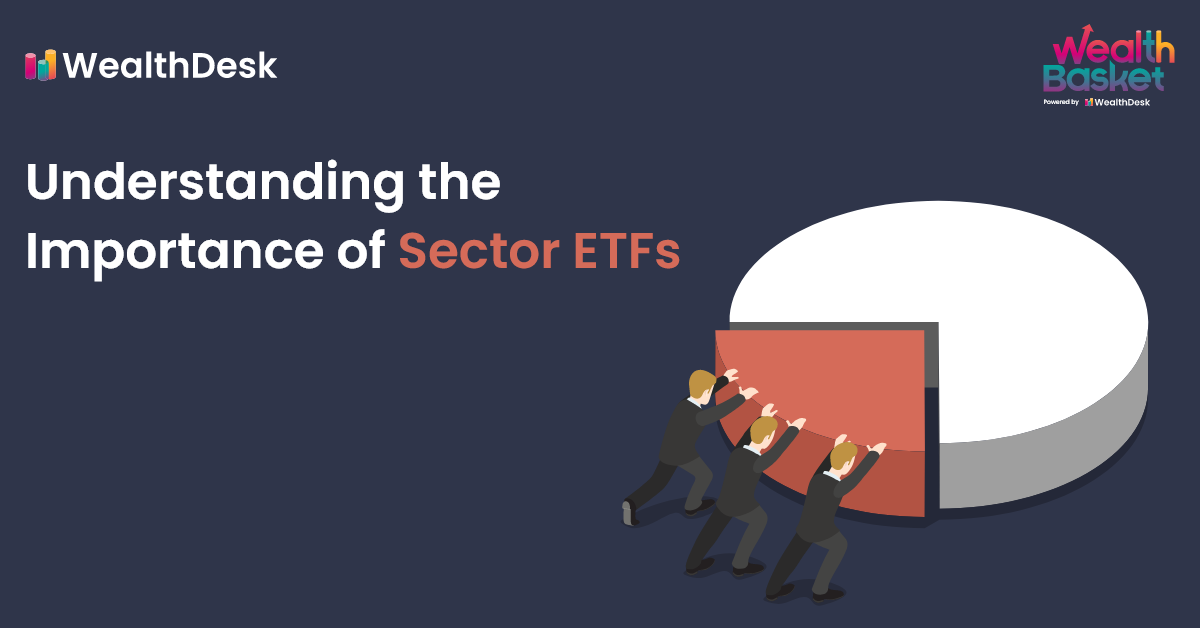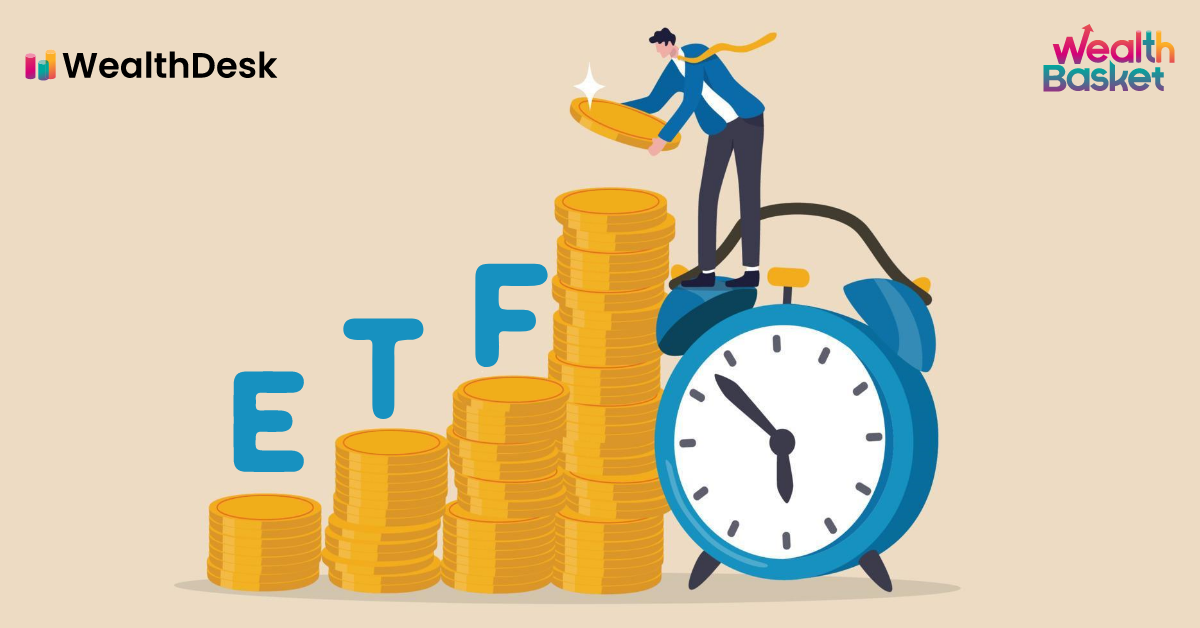As a low-cost, passive investment strategy, you may consider investing in the sector Exchange Traded Funds (ETFs), but what are they, and why do they matter? Some of the ETFs from this category are the communication services sector ETF, financial services sector ETF, retail sector ETF, SPDR sector ETFs, food sector ETF, short energy sector ETF, real estate sector ETF and India sector ETF.
This blog will walk you through the industry ETFs, most common sector ETFs, and what is Global Industry Classification Standard (GICS).
What are Sector Exchange Traded Funds (ETFs)?
Sector ETFs track the market index by investing the funds in the stocks and securities of a specific industry; the title of the ETF indicates the industry or sector. Some examples for Sector ETFs are Retail sector ETFs, SPDR sector ETFs and Food Sector ETFs.
Understanding the Importance of Sector ETFs
Sector ETFs in India are rising in popularity because of their two crucial features: speculation and hedging exposure. They have a high liquidity level and barely have any tracking errors.
They are flexible and offer the investor an opportunity to invest and gain exposure to a particular industry. Sector ETFs also reduce the firm-specific exposure by enabling the investor to buy the whole sector instead of purchasing a few shares. However, they are dependent on stocks, and their prices fluctuate accordingly.
Common Sector Exchange Traded Funds (ETFs)
Global Industry Classification Standard (GICS) is a global standard in the financial markets industry that classifies companies to a particular economic sector and group of sectors depending on their business operations.
The GICS Sectors break down into eleven classes for sector breakdown reporting. It is good to note that each industry has more than one ETF. Some of them are:
Communication Services Sector ETF
GICS business classification in 2018 added a new category – the Communication Services Sector ETFs. They track the index of the companies that invest in communication, information, media, and other such services.
Financial Services Sector ETF
Financial Services Sector ETFs track the market index in the banking sector. These are the ETFs that will replicate the performance of the financial services ETFs in India to generate similar returns that an index would generate.
Retail Sector ETF
Retail ETFs track prices of retail sector companies – both brick & mortar and online merchandise stores. The companies in the sector are warehouse clubs, superstores, home improvement, furnishing stores, department stores, discount stores, specialty stores, and boutiques selling apparel, footwear electronics, and accessories.
SPDR Sector ETFs
The Standard and Poor’s Depository Receipts (SPDR) sector ETFs are issued by the State Street Global Advisors, USA, and track S&P 500 index. Often called ‘Spider’ ETFs, they consist of ten different sector SPDR ETFs and trade on the New York Stock Exchange at approximately one-tenth (1/10th) of the value of the S&P 500 index.
Food Sector ETF
The food industry ETF tracks prices of the index consisting of companies related to food and beverages. The sector includes household consumer staples, grocery stores, restaurants, food distribution companies, and other food-related companies.
These companies are least affected by the recession as these industries thrive irrespective of the economic situation. Food is necessary, and these industries continue to grow and earn profits.
Short Energy Sector ETF
Short Energy Sector ETFs track indexes of companies in natural gas, oil, and renewable energy. These companies relate to several businesses, localities, and risk profiles and offer rich returns to the investors.
Although the industry has inherent risks, the energy industry ETF shields its investors from the risks as it allows them to gain from its exposure.
Despite the plunge in crude oil rates in the first half of 2020, they sprung up in the calendar year 2021 up to 56%. There has been a consistent rise in crude oil rates after 2021. Natural Gas too has risen by 40% in Europe by six times to what it was last year.
Real Estate Sector ETF
Real Estate Industry ETFs (REITs) track the real estate industry prices. They benefit the investors as the fund provides them with a comparatively inexpensive manner to invest in the sector. Also, the investors earn dividends on REITs.
It is easy to have REITs than equity or debt in your portfolio but before you invest, ensure that they have a sector and geographical diversification. These investment suit a sharp investor who have in-depth knowledge of the real estate market.
Wrapping Up
As a portfolio diversification strategy, sector ETFs can be better placed as they invest across the industry consisting of all companies in a particular sector. However, you should always consider your risk appetite, financial goals, and investment period before concluding your investment decision. You can also pick baskets of ETFs already created by industry professionals. At WealthDesk, our SEBI-approved investment professionals have made WealthBaskets that consist of stocks or ETFs reflecting an investment strategy or theme.
FAQs
You can diversify your portfolio by investing in sector ETFs as they invest across a sector to duplicate the market index performance.
They are well-diversified, low-cost, passively managed investment options, and hence, they minimize the risks and optimize the returns.
There are ten sectors in SPDR ETFs where each sector has its separate SPDR ETF.


















